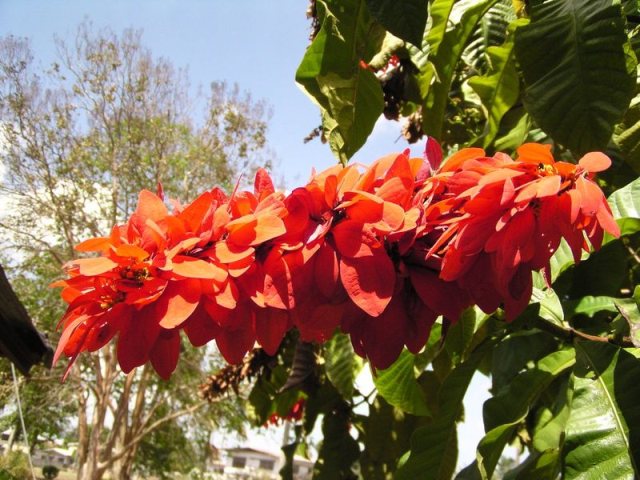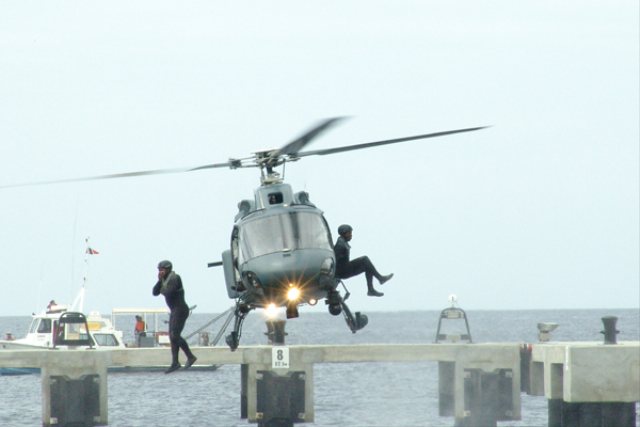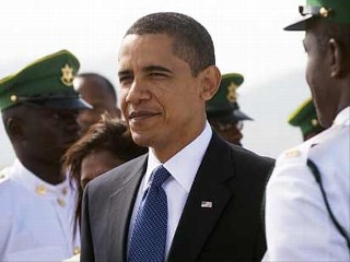Trinidad

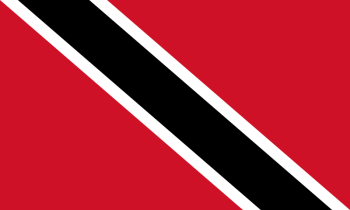
We arrived in Trinidad on
the 20th of July and apart from six weeks spent in England and a week
in Venezuela, we can say our stay has actually been about two months, certainly
longer than anywhere else. Time enough to get to know the island and
it's people. Trinidad and Tobago are South Easterly islands of the Antilles,
situated between ten and eleven degrees North, sixty to almost sixty-two degrees
West. At the closest point Trinidad is just six point eight miles off the
Venezuelan coast. Covering an area of one thousand, nine hundred and eighty
square miles, Roughly fifty miles in length and thirty seven miles wide.
Trinidad’s off islands include Tobago, Chacachacare – (cha-car-she-car-ee),
Monos, Huevos, Gaspar Grande or Gasparee, Little Tobago and St Giles Island.
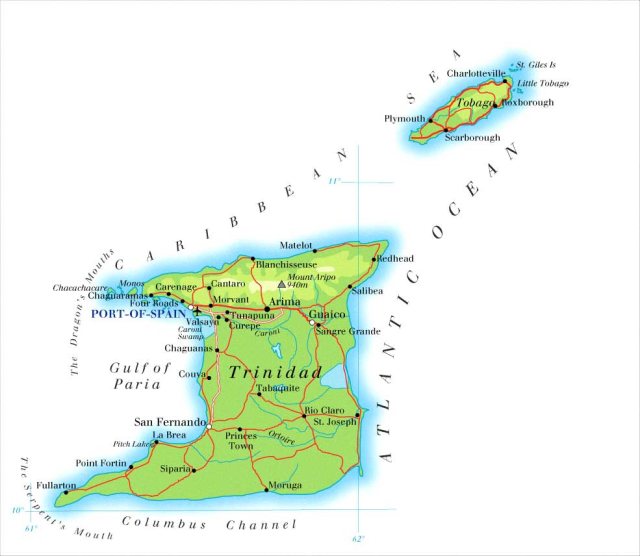
The terrain of the islands is a
mixture of mountains and plains. The highest point is found on the Northern
Range at El Cerro del Aripo – three thousand feet above sea level. The climate
is tropical with two distinct seasons, wet, second half of the year and dry.
Winds mostly blow from the northeast, dominated by the northeast trade winds. It
is seen as a hurricane bolt hole for cruisers – the closet to pass was Hurricane
Ivan in September 2004, Ivan caused a huge amount of damage to yachts on
Grenada.
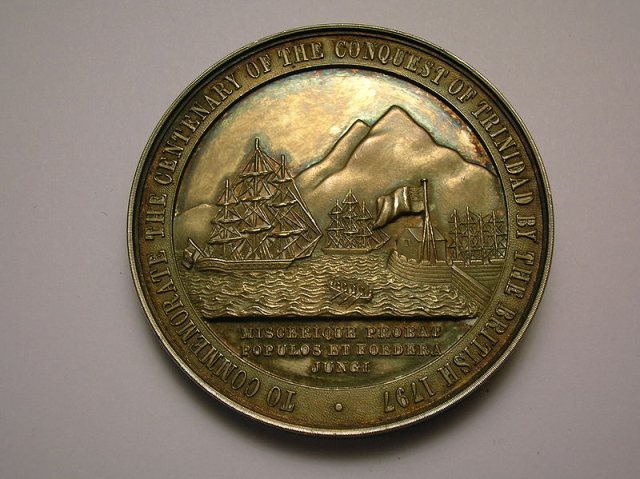
First colonized by the Spanish, the
islands came under British control in the early 19th century. The islands' sugar
industry was hurt by the emancipation of the slaves in 1834. Manpower was
replaced with the importation of contract labourers from India between 1845 and
1917, which boosted sugar production as well as the cocoa industry. The
discovery of oil on Trinidad in 1910 added another important export.
Independence was attained on the 31st of August 1962. The country is
one of the most prosperous in the Caribbean thanks largely to petroleum and
natural gas production and processing. Tourism, mostly in Tobago, is targeted
for expansion and is growing.


Population: 1,356,608 (July 2007 estimated)
Age structure
0-14 years: 19.5%
15-64 years: 71.6%
+65 years: 8.9%
Median age:
31.8
In the
younger age groups there are more males than females, the reverse is true in the
over 65’s. The median age is affected by the frequent drug related deaths
amongst young adults.
The
interesting thing about the people here – most of them speak with a Welsh
accent, including “boyo” and “huere” for here. It took us ages to find out the
reason – allegedly a Welsh Regiment was stationed on the island long enough to
have an influence amongst both the blacks and whites, not so much with the Asian
people. The major groups of people are the Indo-Trinidadians and the
Afro-Trinidadians accounting for 45 and 35%, mixed race, European, Chinese and
Syrian-Lebanese make up the rest.
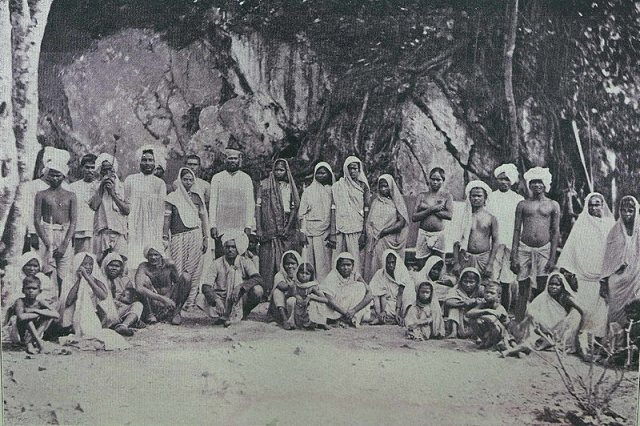
The
majority of the population are descendents of the Colonial slave labourers who
were brought in during the last few years of the Spanish occupation era, and the
beginning of the English. Slave numbers were limited compared to other islands
because at the time the population was so small. The population transformed from
a thousand in 1773 to eighteen thousand, six hundred and twenty seven by 1797.
The Census of 1777 recorded two thousand, seven hundred and sixty three people
which included about two thousand Arawaks. When slavery was abolished in 1834,
Indian indentured workers were brought in to tend the
sugar cane, with the promise of land or a repatriation after six
years.
Country name: conventional long form: Republic of
Trinidad and Tobago
Government type: parliamentary
democracy.
Capital City: Port-of-Spain.
Economy - overview:
Trinidad and Tobago, the leading Caribbean producer of oil and gas, has earned a
reputation as an excellent investment site for international businesses. Tourism
is a growing sector, although it is not proportionately as important as in many
other Caribbean islands. The economy benefits from a growing trade surplus.
Economic growth in 2006 reached 12.6% as prices for oil, petrochemicals, and
liquefied natural gas remained high, and foreign direct investment continued to
grow to support expanded capacity in the energy sector. The government is coping
with a rise in violent crime.
GDP (purchasing power
parity): $21.12
billion (2006 estimated).
Disputes -
international: in
April 2006, the Permanent Court of Arbitration issued a decision that delimited
a maritime boundary with Trinidad and Tobago and compelled Barbados to enter a
fishing agreement that limited Barbadian fishermen's catches of flying fish in
Trinidad and Tobago's exclusive economic zone; in 2005, Barbados and Trinidad
and Tobago agreed to compulsory international arbitration under UNCLOS
challenging whether the northern limit of Trinidad and Tobago's and Venezuela's
maritime boundary extends into Barbadian waters; Guyana has also expressed its
intention to include itself in the arbitration as the Trinidad and
Tobago-Venezuela maritime boundary may extend into its waters as well.
The National
Flower is the Chaconia – Warszewiczia
Coccinea.
Illicit drugs: transshipment point for South
American drugs destined for the US and Europe; producer of
cannabis.
Sadly, the papers most days carry the
sad stories of gun / drug related deaths, this year so far 451, with a
population of around one and a half million, this figure is a higher death rate
than South America including Mexico.
The Ministry of Works, estimates that
an average Trinidadian spend four hours in traffic per day, certainly we
experienced that when the fifty minute drive from the airport to Beez Neez, took
nearly two and a half hours. Emergency services are reliable, but may suffer
delays in rural districts. Medical Care at public hospitals is modern, with high
investment in equipment, but suffers from emigration of personnel. Private
hospitals are available and of a good standard. Many cruisers (US) use the
clinics for medical needs and are covered by their health insurance. Utilities
are fairly sound in the cities. Some areas, however, especially rural districts,
still suffer from water shortages. The government is addressing this problem
with the construction of additional desalinization plants.
The Coastguard put on a display during a visit
by Prince Charles. His mum is due here at the end of the week for a Heads of
State meeting - worse traffic jams than ever.
Human Rights has
been a little slow to evolve here in Trinidad. Homosexual acts are still illegal
and under Article 8 (18/1) of the Immigration Act, non-citizen homosexuals are
not allowed to enter the country.
On the 11th of March
2005, the Government was orderred by the Inter-American Court of Human Rights to
pay US$ 50,000 for "moral damages" to a prisoner who had received fifteen
strokes of the Cat o' Nine Tails, plus expenses for his medical and
psychological care. In the not too distant past attempts to hang prisoners have
been blocked by the Privy Council, with sentences commuted to life imprisonment,
I certainly read of the Trinidad Nine who were hanged in 1999 - when a man in
the street was asked if he approved - he was upset to have even been asked,
indeed 80% of the population supports such a punishment.
When Heads of State
visit, the homeless are gathered off the street and put "in the south" to make
the place look 'tidy', then they paint the kerbs nice and
white.
President Obama visited shortly after he was
elected.
The biggest cultural
event on Trinidad is the world famous carnival. Maybe one day we will visit to
see the thousands who parade the same route as we did on the Emancipation
Parade. Trinidad is the birthplace of Calypso Music and the steelpan band. The
diverse religious and cultural background make for wide and varied festivities
and ceremonies throughout the year. Soca music as well as seasonal Parang,
Chutney music , Rapso (mixture of Caribbean and Indian) and the world wide know
Limbo Dance. Trinidad has claim to two Nobel Prize Winning Authors - V.S.
Naipaul and St Lucian born Derek Walcott. Edmundo Ros, King of Latin American
Music was born in Port of Spain. Designer of Carnival Costumes, Peter Marshall
is also renowned for winning an Emmy Award for his role in the opening ceremony
of the 2002 Winter Olympics and working on many other Olympic
projects.
Sport, obviously no
guesses that cricket is high on the list. Brian Lara, simply known as
Prince is widely seen as one of the greatest batsmen the game has ever seen. The
first Olympic Medal was silver won by Rodney Wilkes for weightlifting in
1948, since then twelve more Olympic medals by nine different athletes, most
recent was a silver for Richard Thompson for the men's 100m in
2008.
Trinidad qualified
for the 2006 FIFA World Cup by beating Bahrain in Manama on the 16th of November
2005, making them the smallest ever country in terms of population to qualify.
The country has a national Baseball team and Netball is also well supported,
Rugby continues to be popular and Horse Racing is regularly
followed.

When we hide out next
season we will pop in for a short week for anti-fouling and spend the rest of
the time exploring Tobago, Guyana and maybe even
Brazil.
ALL IN ALL
READY TO LEAVE BUT WE HAVE MADE THE MOST OF OUR TIME AND THOROUGHLY ENJOYED
OURSELVES AS TOURISTS.








